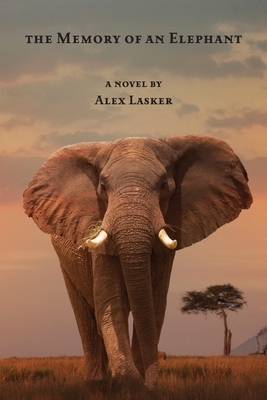The Memory of an Elephant
By Alan Lasker, 2021 Independently Published
Alex Lasker’s novel, The Memory of an Elephant, tells the life story of an African bull born in the late 1950s in Kenya. Some passages are told by the elephant himself, Ishi, while other parts are described by a human narrator. Ishi’s story places him in almost every circumstance a wild elephant might encounter. In this way the book introduces us to the African elephant species as well as to this individual – a huge, loving yet tough bull, always seeking his place in the world.
It is a sweeping narrative of Ishi’s whole life, and as we all know, elephants never forget.
Memory is a survival skill that has served them well – for example, they remember where they found water during a drought and where to go for a mud bath to protect their skin from the hot African sun. They are also very social and emotional. There have been documented cases of elephants that met only once, but recognize each other 20 or 30 years later. They can distinguish between friendly “two-leggers” (as the elephants in this book refer to humans) and evil humans who want to kill them. Elephants are also extremely intelligent. It is not unreasonable, then, that an elderly elephant might tell us about his life – if only we understood his language.
The story begins with Ishi witnessing the poaching of his mother for her tusks, the greatest tragedy of his life. Fortunately, he is rescued and taken to an ad hoc orphanage for wild animals. There he is given a potion that mimics an elephant mother’s milk and is therefore able to survive. During his time at the orphanage there are moments of play and adventure. Ishi learns to use his trunk, a vital skill. He plays with a goat, but the animal doesn’t speak elephant language and, while Ishi likes him, he doesn’t think the goat is very smart! Later Ishi joins a wild herd where he is protected by the matriarch and other females as they follow the ancient elephant trails across vast spaces. When he reaches puberty, he is rejected by the matriarch, as all bulls are at that stage. He finds some other bulls to travel with, sometimes fighting other strong males for the possibility of fathering a baby.
He is also subjected to many gruesome practices by humans – not only poaching, but hunting and killing elephants on safaris, capturing them and taking them to zoos and keeping them isolated and stuck in enclosed spaces without a community. Ishi meets an elephant along the way who tells him how Asian elephants are even forced to do agonizing work pulling logs, beaten to learn tricks to perform for people and forced to have people ride on the bumps on their backs.
By the end I was very fond of this resilient huge bull with a big heart. I found his story captivating as he struggles to survive and be a wild animal, always enjoying the company of other elephants, but with a hole in his heart from growing up as a motherless child. His final journey as an old bull is to return to the orphanage where the good “two leggers” saved him when his mother was killed. I found this to be a very dramatic, touching, even spiritual passage.
Anybody who is fascinated by elephants and wants to save this endangered species will enjoy this novel. And if you fit in that category you will no doubt recognize some thinly veiled real people whose stories are interspersed with Ishi’s story. Most notably is Dame Daphne Sheldrick and her family, who established the sanctuary for orphaned young elephants in Kenya. To this day the Sheldrick Trust saves the lives of orphaned elephants until they are able to join a wild herd. The orphanage is now a professional operation with caretakers hired from local villages who feed the baby elephants, lead them on trails, give them affection and teach them to be elephants.
The author has said he first learned about the Sheldrick orphanage from an article in the National Geographic. He was fascinated and believed it was his calling to tell the memories of an elephant and the people who save them. He has done so with imagination and compassion.
Reviewed by Kathy Parrent, founder and editor of Green Thumb to the Rescue.


